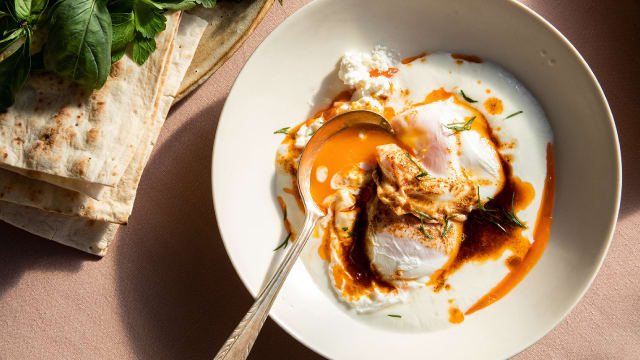Orange

Latin name: Citrus x sinensis (sweet orange), C. x aurantium (bitter orange)
Other names: naranja (Spanish)
Uses: fruit, juice, flavoring
What are oranges?
This citrus fruit is a hybrid between large, pithy pomelo and small, sweet mandarin. It includes tangerines, clementines, and blood oranges, but is distinct from tangelos (which are a hybrid of tangerines and pomelos). There is no more iconic fruit than the orange — can you name another color that’s also a flavor? Oranges are little orbs of fragrant sunshine in the winter, and their peel and flesh can be used in many different ways.
Why are oranges healthy?
Famously high in vitamin C, oranges also contain fiber, potassium, and choline, all of which are good for your heart. Most impressively, they also have at least 60 flavonoids and 170 phytochemicals with antioxidant and anti-inflammatory properties, which benefit just about every organ and system in your body.
What do oranges taste like?
Different varieties have slightly different flavors. The “common” sweet orange types Valencia, Hamlin and navel are the most widespread varieties seen in American grocery stores, and have a perfect balance of sugar and acidity. Blood oranges have a lovely purple-red tint to their skin and juice and are a little tarter. Seville and other bitter oranges are less common in markets, but their complexity and bitterness make them the superior variety for marmalades.
How do I use oranges?
Supremes of fresh orange brighten up salads. They’re delicious with peppery greens and sharp cheese, or with ginger, soy sauce, and sesame oil in noodle salads. Use fresh orange juice (especially with pomegranate) in any number of cocktails.
Oranges love savory foods too. They’re famously paired with roast duck in French cuisine, and chicken in a Chinese-American classic, but you can apply the winning salty-savory-sweet combo to tofu or other meatless protein, or use orange marmalade, grated ginger, and salted butter to glaze carrots and sweet potatoes. If you can find bitter oranges, use the juice (plus achiote and other spices) to make a pibil of your favorite protein. (If you can’t find bitter orange, use a combo of sweet orange, lime, and grapefruit).
Orange blossom water (a distillation of the flowers of bitter orange) has a very strongly floral fragrance and flavor, but when used judiciously it imparts something magical to Mediterranean, Middle Eastern, and North African recipes, especially pilafs and sweets.
Oranges can even be used as pomanders to freshen up closets!
What do oranges pair well with?
Oranges have a remarkable affinity for lots of Mediterranean ingredients. They’re a beautiful match for almonds and walnuts, figs, olive oil, honey, and semolina; their fragrance is as heightened by rosemary as it is vanilla (just think orange Creamsicle). A squeeze of orange will brighten a tomato soup like you wouldn’t believe.
They also love warm spices like clove, aniseed, fennel, cinnamon, and cardamom — add these spices to a simple syrup, poach sliced oranges in it until tender, then serve over an almondy olive oil pound cake with a dollop of sweetened mascarpone. Sweet, juicy oranges are a dream when paired with the bitter flavors of dark chocolate and coffee. A strip of orange zest is necessary to balance the bitterness of a negroni or an Aperol spritz.
Where do oranges grow?
Oranges need warm weather to thrive — they originated in the region encompassing Southern China, Northeast India, and Myanmar. Although Brazil currently leads the charge in the global crop, China and India still make up the bulk of the remaining production. In the United States, California, Florida, Texas, and Arizona grow the most citrus.
How to buy oranges
Look for brightly colored fruit with no soft spots. Citrus will keep longer in your fridge than on your counter.
Fun orange fact
From the 17th to 19th centuries, there was something of an orange fad among the moneyed classes of England and Continental Europe. Everyone who was anyone had an orangery — a dedicated greenhouse or sunroom filled with citrus trees — so they could gaze upon their expensive, fussy orange trees from the comfort of their own home all year round. The trend crossed the pond, too:; George Washington had one built at Mount Vernon in 1787.




